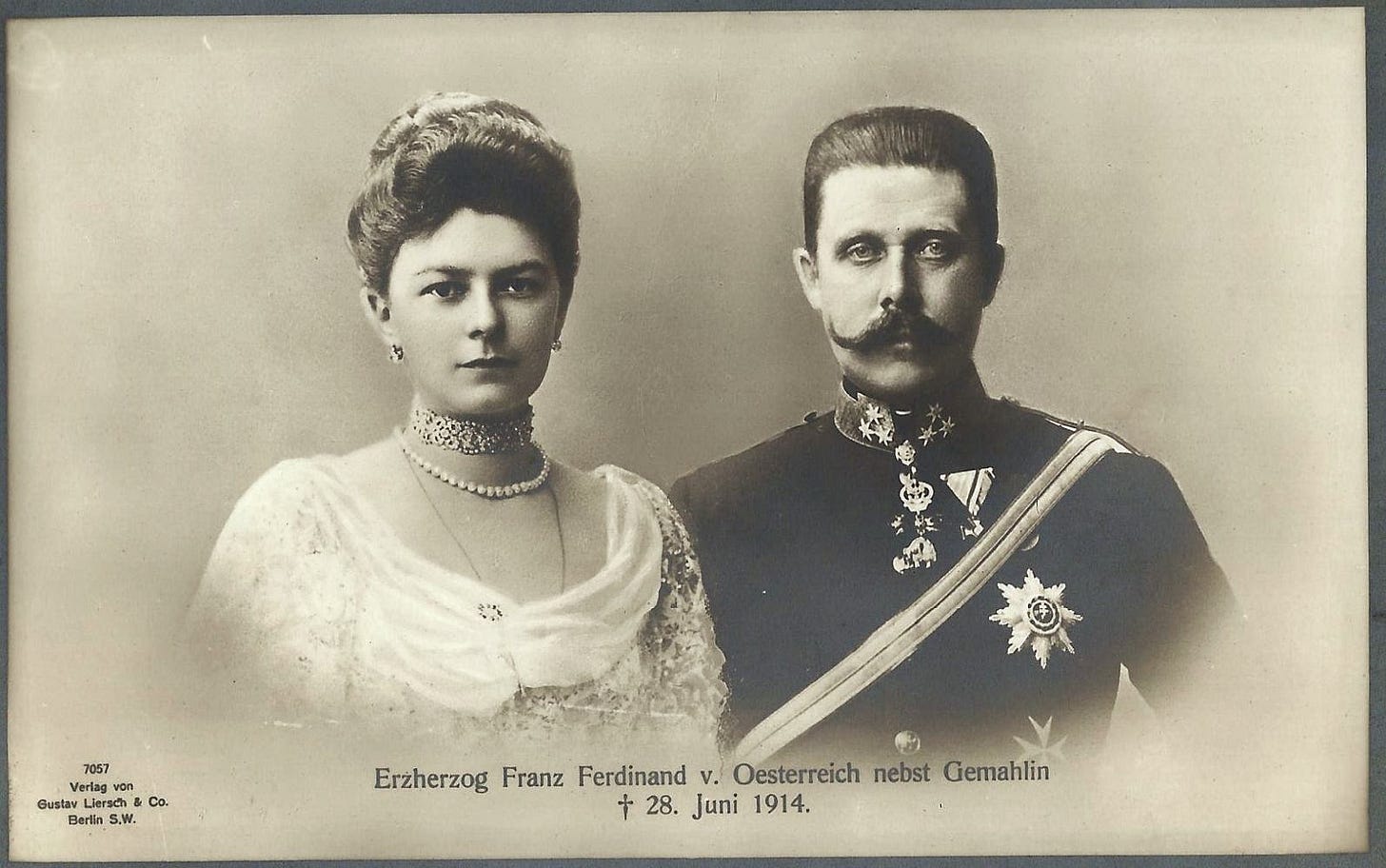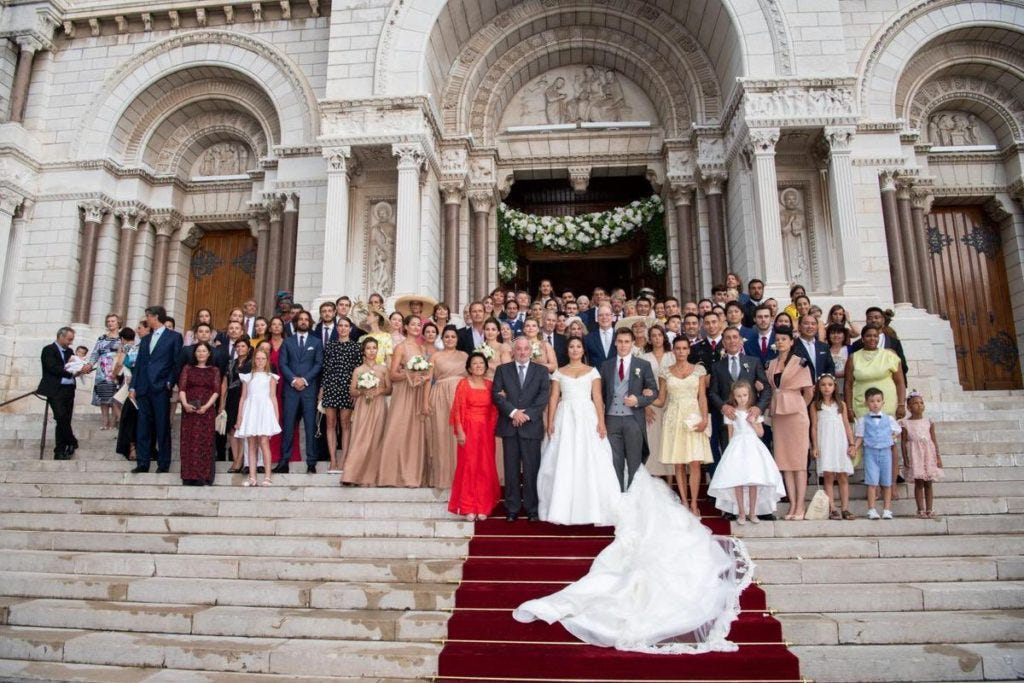"What's in a name?"
Part II
I’ve been missing for six weeks as I finished up running my music publishing startup, ClefRights, through the Founder Institute accelerator. I chose to re-share this issue both because it's a followup to the last reissue and because it provides a segue into the next new topic.
This issue first came out on Ghost as the 2021 Christmas issue, so new members will not have seen it. I have added several updates as some of the information is outdated, and I’ve included another marriage which is apropos to the topic. Part I is hyperlinked here if anyone would like to read it first.
Having dedicated an issue to the British aristocracy/extended royal family who have married people of color, or are mixed-race, it seems only just to discuss continental European families. This is important because the so-called Sussex Squad is consistently unpleasant over the idea that the Duchess of Sussex was the first woman of colour to marry into a royal family. Further, the Sussex Squad paints aristocracy or royalty as racist by virtue of their position. This view is narrow-minded and provably false. To illustrate, I have assembled a sample of mixed-race marriages made within other European families.
Prince Maximilian Nikolaus Maria of Liechtenstein, second son of the Sovereign Prince of Liechtenstein, married Panamanian-American Angela Brown in 2000 in a Roman Catholic ceremony at the Church of St. Vincent Ferrer in New York City. They had had the civil ceremony in Liechtenstein a few days earlier. Princess Maximilian, informally called Princess Angela, is a graduate of the Parsons School of Design and was working in New York as a designer with her own fashion label when she met Harvard-educated Prince Maximilian who was working for an investment bank at the time.
Prince Maximilian obtained dynastic permission for the marriage from his father Hans-Adam II, and Maximilian proposed to Angela in 1999. Following royal rules, Angela sold her fashion line and officially retired from business before the wedding. As a sign of the family’s esteem, Angela wore the Liechtenstein Kinsky tiara at her church ceremony. Upon saying the words ‘I do,’ she became Her Serene Highness Princess Maximilian von und zu Liechtenstein, Countess of Rietberg.
One little note on Angela von Liechtenstein’s dress: this was the last piece she created before retiring. Its similarity to the dress worn eighteen years later by Meghan Markle at her wedding to Prince Harry has not gone unnoticed. Even Tatler noticed that the second dress was a little too similar to be a simple homage.
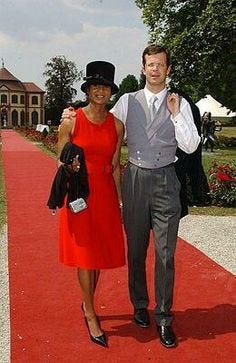
The couple has one child, Prince Alfons Constantin Maria von und zu Liechtenstein, who is sixth in line to the throne. Maximilian and Angela keep a low profile, with Angela consistently refusing to give interviews. Maximilian manages the family’s LGT bank. Little is known about their son, as part of his parents staying out of the limelight. However, he is known to have attended boarding school in Germany and then Wellington College (a top boarding school) in England and that he speaks three languages, German, English, and Spanish. UPDATE: Prince Alfons is now thought to be studying at Georgetown University, a Roman Catholic university in Washington, D.C. He is, of course, heir to his parents’ fortune and his father’s titles. He accompanied his parents to an audience with the Pope. On a frivolous note, a French royalty blog named Alfons as one of the most desirable bachelors in Europe.

Like most aristocrats, the Habsburg family is held to restrictions on who they can marry. Broadly, the restrictions that affect Catholic aristocrats and gentry all over the world are: 1) must marry equally, 2) must marry with the permission of the family, usually the head of their dynasty, and 3) must marry according to the teachings of the Roman Catholic Church and in a church wedding. Each of these criteria has several subheadings with various exceptions, wherefores, and workarounds. The first two restrictions also affect non-Catholic aristocrats and gentry, with the third, religious affiliation, changed to one appropriate for the family, e.g. the Romanovs are required to be married according to the teachings of the Russian Orthodox Church; the Windsor-Mountbattens are required to marry according to the customs of the Church of England, though the Church of Scotland and the Roman Catholic Church are also recognized for marriage purposes.
If any of these requirements are broken or disregarded, the marriage can be set aside as invalid. Depending on the country, peerage, and the severity of the violations, any children from such a union can be denied inheritance rights and possibly even denied use of the familial name as they would not be members of the dynasty. (For a comprehensive explanation of how these laws worked in central Europe, see this linked article.) It was into this historic context and the issues these marital requirements could create that Otto von Habsburg reportedly decreed in his capacity as head of the House of Habsburg that going forward ‘All Habsburg marriages are equal.’ This was a significant gesture on Otto’s part as he became head of the family and titular emperor as a result of his great-uncle making an unequal marriage. Archduke Franz Ferdinand fell in love with and insisted on marrying Countess Sophie Chotek. The marriage was forbidden under Habsburg house law — house law is a type of rulebook for aristocracy and royalty and it covers additional restrictions on marriages, inheritance, titles, etc. — but Emperor Franz Josef worked out a compromise whereby the marriage could proceed but as a morganatic marriage. I wrote another article on aristocratic marriage law which can be accessed by clicking on this sentence. Franz Ferdinand’s morganatic marriage meant that Otto’s own father, Karl, became second-in-line to the throne, later succeeding as Emperor Karl.1
Count Ferdinand Leopold Joseph von Habsburg, son of Archduke Geza of Austria, married Sudanese Mary Nyanaut Ring Machar in 1999. Otto von Habsburg issued his decree ‘All Habsburg marriages are equal’ as part of his granting formal permission for this marriage. Upon her marriage, Mary Nyanaut Ring Machar became Countess Mary von Habsburg. The couple has four children, Countess Luisa Aluel von Habsburg, Count Láslò Rum von Habsburg, Countess Gisela Aluk von Habsburg, and Count Mátyás Malith von Habsburg. Their father belongs to the Hungarian branch of the family, which is why they received Hungarian iterations of family names.
As members of the House of Habsburg, these children are held to the same rules that govern all aristocratic marriage. Hypothetically, if one of them requested permission to marry, the family could forbid the union if they think a prospective partner isn’t acceptable. It’s not about race — an African-European child born to a valid Habsburg marriage is a Habsburg — it’s about family and who their family is.
The Count’s brother, Count Franz Ferdinand von Habsburg2, is also married to a woman of colour. Countess Lei von Habsburg is a Black American lawyer who grew up in Bedford-Stuyvesant, New York City, and in Columbia, South Carolina.

The Countess gave an interview in which she described,
About being a Black Habsburg, she said ‘It's not an American Princess fantasy, it's an American opportunity fantasy. Sometimes in our communities, we don't get across that all children – children of color – have a right to experience everything in the world. If you are standing in a castle at a black-tie affair next to your husband, you belong there.’ The couple has three children. They hold the rank of count.
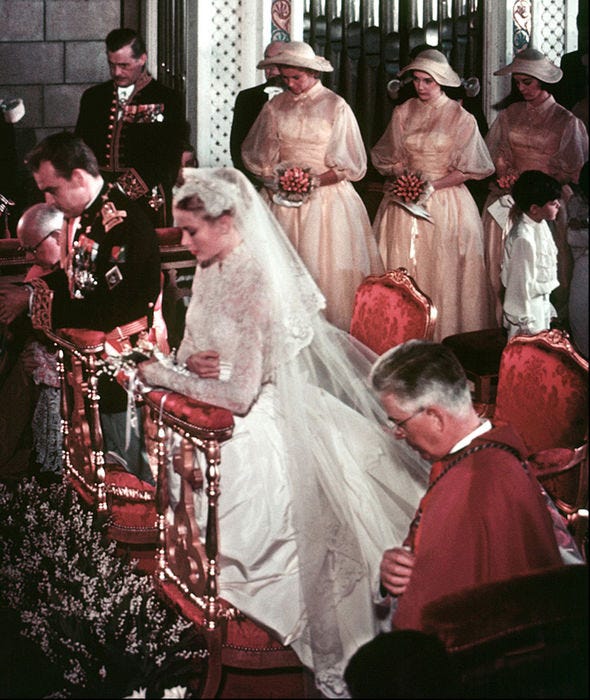
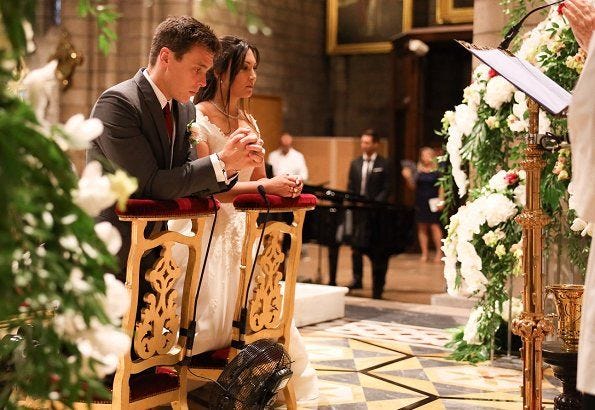
In 2019, Princess Stéphanie of Monaco’s eldest son Louis Ducruet married Marie Hoa Chevallier at the Cathédrale de Notre-Dame-Immaculée, where his grandparents married sixty-three years before and where they are buried. Louis met the French-Vietnamese Marie at university, and the pair dated for several years before the marriage. The Chevallier family is very private, as are the couple themselves. But it is known that the couple lives and works in Monaco, and they welcomed their first child earlier this year. Like his mother, Louis and his child (since I updated this article the first time, a second child, Constance, has been born) are in the line of succession for the Monegasque throne.3
Marie Hoa Chevallier isn’t the first Vietnamese woman to marry a European aristocrat. Princess Phương Mai of Vietnam (1937 — 2021), the eldest daughter of Emperor Bảo Đại and Empress Nam Phương (her regnal name; her birth name was Marie-Thérèse Nguyễn Hữu Thị Lan) married Don Pietro Badoglio, 2nd Duke of Addis Abeba (Addis Ababa in English) and 2nd Marquis of Sabotino in 1971. Pietro Badoglio was the grandson of Pietro Badoglio, the Italian general who led the switch from the Axis side to the Allied side during World War II. Mario, General Badoglio’s son, was captured by the Nazis and interned first in Mauthausen and then in Dachau. Due to health problems caused by his incarceration, Mario died young in 1953, resulting in his son, Pietro, inheriting the titles directly from his grandfather. Phương Mai and Pietro Badoglio had two children, Don Flavio, the 3rd Duke, and Donna Manuela.
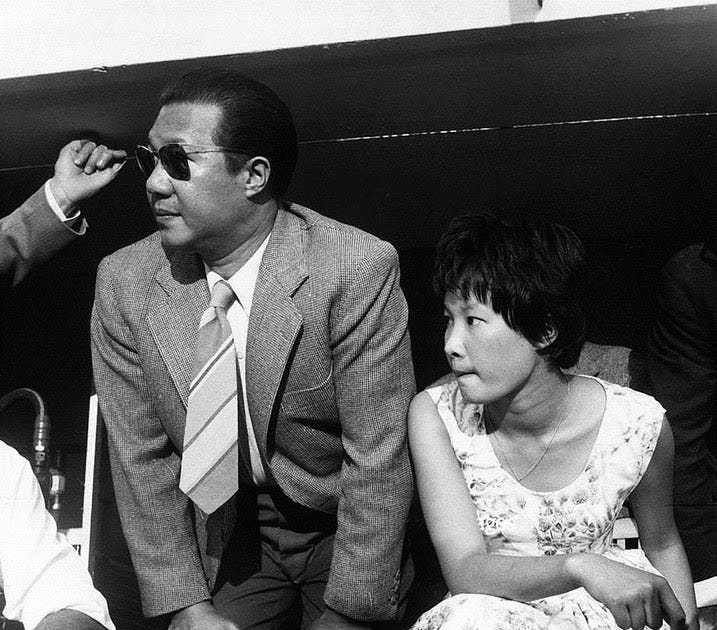
The Nguyen family, Vietnam’s imperial family, avoid publicity as much as possible. Hence the paucity of photographs of them. By the time the above photo was taken, the Emperor and Empress had been separated secretly for many years. Empress Nam Phương, Phương Mai’s mother, was from a noble Catholic family and married Bảo Đại out of a sense of duty. After he lost the throne in 1945, she quietly moved the children to France so that they could receive the Catholic boarding school education she had had. However, they only officially went into exile in 1955, when the Emperor moved from Vietnam to Paris at the request of the South Vietnamese government.
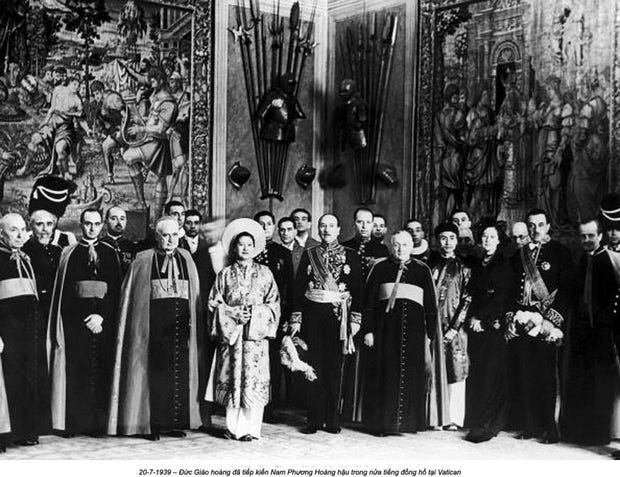
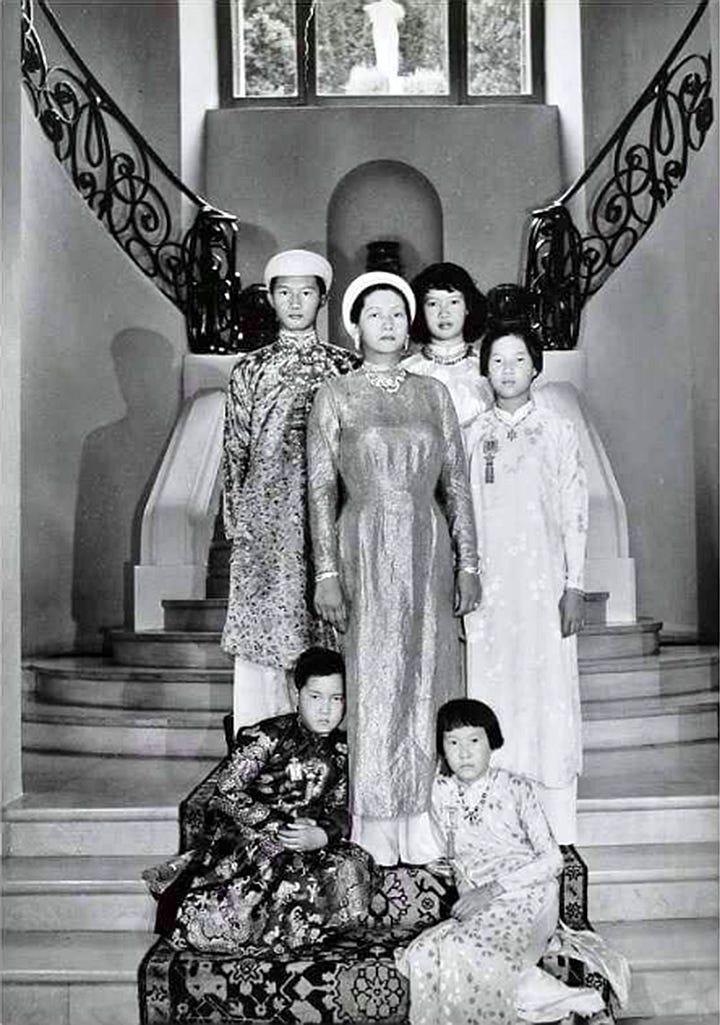
The Roman Catholic royal and reigning families may have a slight monopoly on mixed-race marriage, but they are not the only ones to have multi-racial members of the family. Prince Joachim of Denmark married Alexandra Christina Manley at the Frederiksborg Castle Chapel in 1995. Alexandra is part Austrian and part Hong Kong Chinese.

Like Angela von Liechtenstein, Princess Joachim, informally known as Princess Alexandra, retired from business. Further, she gave up her British citizenship, received from her Hong Kong parent, in order to comply with the custom that royals of a country should only hold citizenship in that country. She was remarkable among those who married into the Danish royals because she mastered Danish within a few months, being able to speak it with a barely perceptible accent. She was raised natively bilingual between German and English, which she credits with helping her learn Danish quickly.
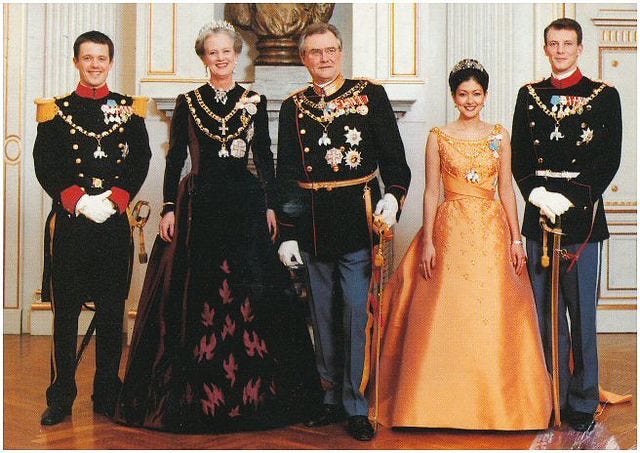
Alexandra was Queen Margarethe II's first daughter-in-law and mother of the first grandchild. After the couple divorced, Queen Margarethe II gave Alexandra the class I title of Countess of Frederiksborg. Class I means that Alexandra’s correct styling is ‘Her Excellency The Countess of Frederiksborg’. The marriage produced Prince Nikolai and Prince Felix, who are seventh and eighth in the line of succession. UPDATE: as of 2022, all of Prince Joachim’s children hold the rank of count, rather than princely rank.
When the Duchess of Sussex married Prince Harry, fans gushed about how there was ‘finally an American princess’. Some took the rhetoric even further, describing the Duchess as the first ‘Black American princess’. Obviously this is untrue. Angela von und zu Liechtenstein is a Black American who is a princess.
One might ask why the broader public, which demonstrated at the time of the Sussex marriage that they care about racial diversity, is unaware of these other women of color who hold European royal or aristocratic titles. Perhaps it is to do with the fact that Angela von Liechtenstein, Mary von Habsburg, Lei von Habsburg, and Alexandra Frederiksborg are not celebrities. They do not parade their titles for profit. Their lives are not structured around a desire to be seen and envied. They live by old values, avoiding scandal (mostly), never confusing what they do with who they are, and abiding by restrictions imposed by their privileged positions. Some of these women have given up much to marry their prince. From what is known of them, they revel in their ability to live simply while moving fluidly in formal settings. These princesses represent dignity and gravitas, and in so doing they ensure that celebrity-followers will never appreciate them properly.
Merry Christmas!
MLD
When Karl was born, his own father Archduke Otto was second-in-line. Otto’s premature death meant that Karl became second-in-line at age sixteen. Because of the complications surrounding his uncle’s marriage and his father’s known ill health, Karl was raised from a young age as if he was crown prince, rather than third-in-line. Sometimes he is incorrectly called Emperor Karl I. This is wrong because it isn’t customary to add the numeral ‘I’ until there is a ‘II’. Technically, Queen Elizabeth I of England was simply Queen Elizabeth until Elizabeth II came to the throne.
The New York Times identifies Franz Ferdinand von Habsburg as an Archduke, but the Almanach de Gotha identifies him as a Count. As the Almanach is the authoritative source for central European aristocracy and royalty, I have assumed that they are correct and the New York Times misidentified the title.
The Monegasque princedom only has a clear line of succession through the direct line of the reigning sovereign. Currently the order of succession is first Prince Jacques and then Princess Gabriella. In the event that a sovereign prince or princess dies without a direct heir, the Monegasque Crown Council chooses the new sovereign from among the legitimate members of the House of Grimaldi.




